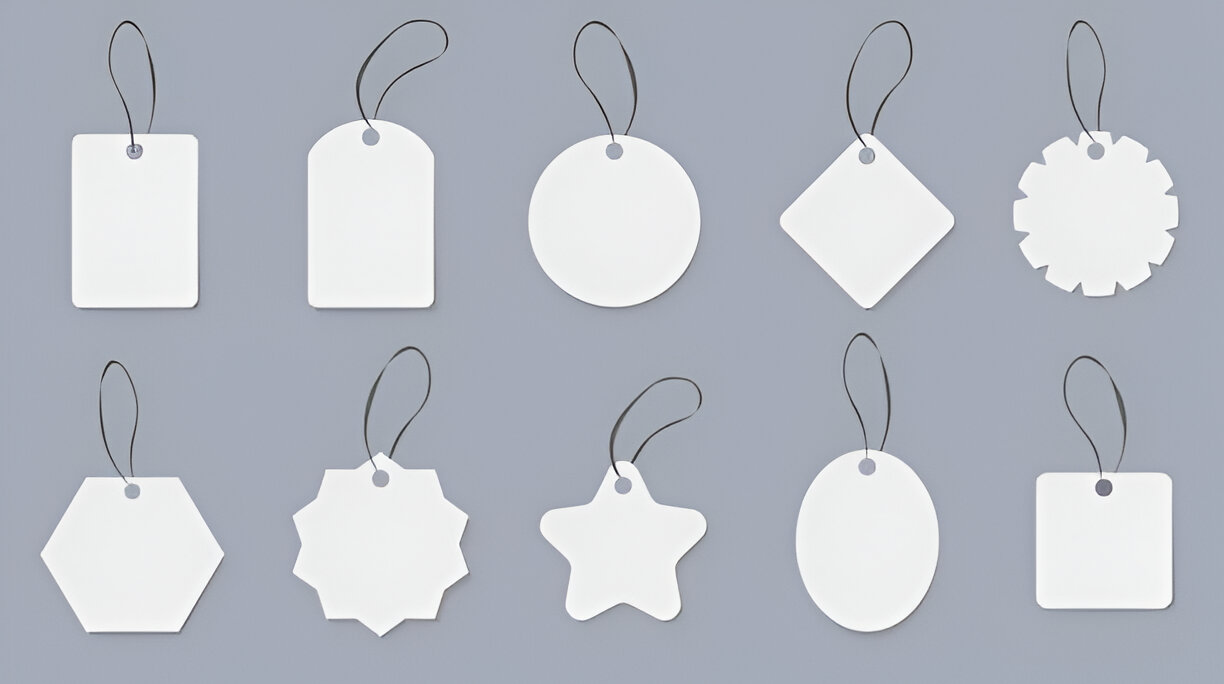Brand tags are more than just a piece of fabric sewn onto your clothing. They are a powerful tool that speaks volumes about your brand’s identity, quality, and value proposition. In this blog, we will explore everything you need to know about brand tags for clothing, including their types, benefits, design considerations, and best practices to create standout tags that elevate your brand’s presence in the highly competitive fashion market.
What are Brand Tags in Clothing?
Brand tags, also known as clothing labels or garment tags, are small labels attached to clothing items that display essential information about the brand, size, fabric composition, care instructions, and sometimes even motivational or decorative messages. They are an integral part of the clothing that contributes to the overall brand image and customer experience.
Why Are Brand Tags Important?
1. Brand Recognition: Brand tags help in establishing brand identity and recognition. A well-designed tag makes a brand memorable and helps it stand out from the competition. Think of iconic tags from brands like Levi’s or Nike; these labels alone can often identify the brand without seeing the actual clothing item.
2. Trust and Authenticity: A professional-looking brand tag assures customers that they are purchasing an authentic product. It also communicates the brand’s commitment to quality, enhancing the perceived value of the clothing.
3. Legal Compliance: Many regions have regulations requiring specific information on clothing tags, such as fabric content, country of origin, and care instructions. Failing to include this information can lead to legal issues, making brand tags an essential part of compliance.
4. Customer Guidance: Tags provide crucial information about how to care for the garment, ensuring it lasts longer. This guidance can prevent damage from improper washing, drying, or ironing.
5. Marketing Tool: Brand tags serve as a subtle yet effective marketing tool. By incorporating the brand’s logo, slogan, or a unique design element, they can reinforce the brand message every time the clothing is worn.
Types of Brand Tags for Clothing
1. Woven Labels:
– Description: Made from woven threads, these labels are known for their durability and premium appearance. They are commonly used by high-end brands because they offer a refined look.
– Pros: Long-lasting, professional appearance, can withstand multiple washes without fading.
– Cons: More expensive and may feel slightly stiff on the skin.
2. Printed Fabric Labels:
– Description: These are labels printed on satin, cotton, or polyester materials. They are soft, flexible, and can be customized with various designs and colors.
– Pros: Cost-effective, soft on the skin, and highly customizable.
– Cons: May fade or wear off over time, especially with frequent washing.
3. Heat Transfer Labels:
– Description: Often called “tagless” labels, these are printed directly onto the fabric using heat. They are popular in activewear and casual clothing.
– Pros: Comfortable, no irritation from sewn-in tags, sleek appearance.
– Cons: Can peel off over time, especially if not applied correctly.
4. Hang Tags:
– Description: These are not sewn into the garment but attached using a string or plastic fastener. Hang tags often include the brand name, price, and marketing information.
– Pros: Adds a high-end feel, offers more space for storytelling or brand messaging.
– Cons: They are removed after purchase, limiting their long-term impact.
5. Size and Care Labels:
– Description: These labels indicate the size of the garment and provide washing, drying, and ironing instructions.
– Pros: Essential for consumer guidance, helps prevent damage from incorrect care.
– Cons: Must be accurately printed to avoid consumer confusion.
Design Considerations for Brand Tags
1. Material Choice: The material of your brand tag should align with your brand’s ethos. Sustainable brands might opt for organic cotton or recycled materials, while luxury brands might prefer woven or embroidered labels for a more premium feel.
2. Typography and Font: Your font should be clear, legible, and reflective of your brand’s style. Bold fonts can make a statement, while elegant scripts can convey sophistication.
3. Color Palette: The colors used in your brand tag should complement your clothing line and be consistent with your overall brand aesthetic. Contrasting colors can make the tag stand out, while muted tones can provide a subtle, cohesive look.
4. Logo and Branding: Your logo should be prominently displayed on the tag. This not only reinforces brand recognition but also adds a touch of professionalism.
5. Placement: Consider the placement of your tag carefully. Common areas include the neck, side seam, or waistband. The placement should be visible enough to promote the brand but not so prominent that it irritates the wearer.
6. Sustainability: With the rise of eco-conscious consumers, sustainable tags are becoming more popular. Tags made from organic or recycled materials, and those that are easy to remove for recycling, can appeal to a broader audience.
Best Practices for Creating Effective Brand Tags
1. Keep It Simple: Avoid overcrowding your tag with too much information. Focus on the essentials like brand name, size, care instructions, and fabric content. Too much text can be overwhelming and diminish the aesthetic appeal.
2. Use High-Quality Materials: Your tag’s quality reflects your brand’s quality. Invest in durable materials that won’t fade or fray easily. A high-quality tag adds to the perceived value of the garment.
3. Test for Comfort: Ensure that your tags do not irritate the skin, especially for items like t-shirts, lingerie, or children’s clothing. Softer materials and seamless edges can improve comfort.
4. Consistent Branding: Ensure that your tags are consistent with your brand’s overall look and feel. This includes the logo, colors, and even the tone of the text. Consistency helps build a strong brand identity.
5. Include a Unique Touch: Adding a unique element to your tags, such as a motivational quote, sustainability message, or special design, can make your brand more memorable and give customers a reason to connect with your products on a personal level.
6. Think About Longevity: Consider how the tag will look after multiple washes. Will it still represent your brand well? Choose materials and printing methods that are durable and designed to last.
7. Ensure Legal Compliance: Make sure your tags comply with local regulations regarding labeling requirements. This often includes fabric content, country of origin, and care instructions. Non-compliance can result in penalties or even bans in certain markets.
How to Source Brand Tags
1. Find Reputable Suppliers: Look for suppliers who specialize in the type of tags you need. You can find these suppliers through trade shows, online directories, or referrals from other brands.
2. Request Samples: Before placing a bulk order, request samples from potential suppliers. This allows you to test the quality and ensure it matches your brand’s standards.
3. Consider Lead Times and Minimum Orders: Be aware of the supplier’s lead times and minimum order quantities. Some suppliers may have long production times or require a large initial order, which can impact your planning and inventory.
4. Check for Customization Options: Ensure that the supplier offers the level of customization you need, from color matching to unique finishes like embossing or foil printing.
Brand tags are a small but mighty component of any clothing line. They convey crucial information, enhance the brand image, and even influence customer perceptions of quality and authenticity. By carefully considering the design, materials, and placement of your brand tags, you can create a more cohesive and impactful brand presence in the competitive world of fashion.
Investing in well-crafted brand tags not only enhances the overall appeal of your garments but also strengthens your brand’s identity, fostering a deeper connection with your customers. Whether you’re a new designer or an established brand, optimizing your brand tags is a crucial step toward building a successful clothing line.
By following best practices and focusing on the details, your brand tags can become a key element in driving brand loyalty and making a lasting impression on your customers.



